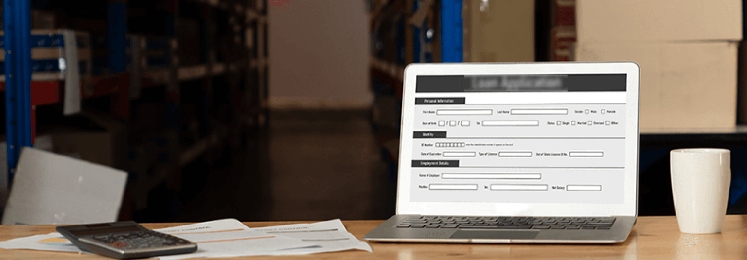A supplier invoice is an essential part of business accounting. Whether managing a small business or a large corporation, handling and managing supplier invoices efficiently will help you ensure smooth financial operations.
In this article, we’ll discuss and understand a supplier invoice, provide examples, and explain why automating supplier invoices can be a game-changer for your business.
What is a Supplier Invoice?

A supplier invoice is a basic formal document issued by a supplier to a buyer that lists the goods or services provided, the payment terms, and the total amount due. It’s essentially a request for payment from the supplier.
In accounting, supplier invoices are recorded in the accounts payable ledger, where the business tracks what it owes to suppliers. A typical supplier invoice will include:
- Invoice Number: A unique identifier for tracking.
- Supplier Details: Name, address, and contact details.
- Itemized List of Goods/Services: The products or services provided.
- Total Amount: The total cost, including taxes and discounts.
- Payment Terms: When and how payment should be made.
Supplier Invoices are very important in payment tracking and help businesses manage their cash flow by keeping track of payments.
Supplier Invoice role in Accounting
In accounting, a supplier invoice is used to document the expenses incurred for purchasing goods or services. Once the invoice is received, the accounts payable department processes it, ensuring that payments are made on time.
Supplier Invoice vs Purchase Invoice
While a supplier invoice is sent by the seller to request payment, a purchase invoice is recorded by the buyer to acknowledge receipt of goods or services. The difference lies in perspective: supplier invoices represent outgoing costs for the buyer, while purchase invoices record incoming goods or services.
Supplier Invoice Example
To help illustrate, here’s a sample of a supplier invoice:
Supplier Invoice #5678
Supplier: ABC Distributors
Buyer: XYZ Ltd.
Invoice Date: 09/17/2024
Due Date: 09/30/2024
| Item | Description | Quantity | Unit Price | Total |
| Product A | Office chairs | 50 | $100 | $5,000 |
| Product B | Desks | 20 | $200 | $4,000 |
Subtotal: $9,000
Tax (10%): $900
Total: $9,900
This example of a supplier invoice shows the breakdown of charges, tax, and total amount due. It also highlights the necessary details like supplier information, invoice number, and due date.
Supplier Invoice Template
Businesses often use a supplier invoice template to ensure consistency and accuracy in their invoicing processes. The template generally includes all the required fields such as invoice number, supplier and buyer details, item descriptions, and total amount due.
Templates are available in various formats like PDF, Excel, and Word, and can be easily customized for individual business needs.
Reasons to Automate Supplier Invoices

As businesses grow, managing multiple invoices manually can become cumbersome. The use of AP Automation or any invoice processing software can significantly improve the efficiency of handling supplier invoices. Here are some compelling reasons why businesses should consider automating their invoice management process.
1. It Lowers the Costs
Automating supplier invoices reduces manual labor costs. By using automated systems, businesses can eliminate the need for excessive paperwork, decrease errors, and reduce administrative costs related to invoice processing. Automation also helps in tracking and managing invoices more efficiently, leading to fewer late payments and penalties.
2. It Helps in Improving the Productivity of the Team and Business
When supplier invoices are automated, employees no longer need to spend countless hours manually entering data or chasing down missing invoices. This frees up time for other critical tasks, improving overall team productivity and allowing the business to focus on growth.
3. The Business Will Have a Steady Workflow
Manual invoice processing often leads to bottlenecks in payment approvals, which can disrupt cash flow. Automation ensures a steady workflow by streamlining the invoice approval process, thus enabling timely payments to suppliers and reducing the risk of late fees.
4. It Will Be Easier and Quicker to Perform an Audit
Like the vendor invoice process, Automating supplier invoices makes tracking and retrieving records easier. Since all invoice data is stored in a centralized digital system, auditors can quickly access the necessary information, simplifying the audit process and improving transparency.
5. Timeliness of Payments
Late payments can damage relationships with suppliers and even result in service disruptions. With automated reminders and alerts, businesses can ensure they meet payment deadlines. This timeliness of payments strengthens the supplier-buyer relationship and helps avoid late fees or interest charges.
6. It Ensures Better Compliance
Automation helps businesses stay compliant with tax laws and regulations. Automated systems can be programmed to apply the correct tax rates and ensure that invoices are processed according to local regulatory requirements, reducing the risk of compliance issues.
7. It Strengthens and Improves the Relationship with the Supplier
By automating supplier invoices, businesses can maintain better relationships with their suppliers. Suppliers appreciate prompt payments and transparent communication, both of which are made easier with automation. This can lead to better negotiation opportunities and favorable terms in the future.
Supplier Invoice Format and Templates

There are various formats for supplier invoices, each designed to suit different business needs. Some businesses prefer using an Excel template, while others might use a PDF or Word document for ease of sharing and storage. Regardless of the format, it’s essential to include:
- Supplier and buyer details
- Invoice number and date
- An itemized list of products/services
- Payment terms
- Tax and total amounts
These formats ensure all relevant information is covered, making it easy for both the buyer and supplier to process payments.
What is a Supplier Invoice Request?
A supplier invoice request is a formal request made by a buyer to a supplier, asking them to provide an invoice for goods or services received. This typically occurs when a buyer hasn’t received an invoice after the completion of a transaction or if the initial invoice had errors.
What is a Charge Invoice from a Supplier?
A charge invoice from a supplier is a bill that includes the charges or fees for the goods or services provided. This document serves as a request for payment and typically includes a breakdown of the charges, taxes, and the total amount owed.
Supplier Invoice in Workday
Workday is a popular ERP system used for managing financial transactions and human resources. In Workday, a supplier invoice is a digital record of the transaction between a supplier and a buyer. The system automates many aspects of invoice processing, from approval workflows to payment scheduling, improving efficiency in managing invoices.
Supplier Payment Management Process
The supplier payment process starts when the invoice has been received and approved. Depending on the decided payment terms, the buyer will make the payment through bank transfer, check, or another payment method.
Managing payments efficiently is crucial for maintaining good supplier relationships and ensuring uninterrupted supply chains.
Hence, the Supplier Payment Management Process involves managing the entire cycle from receiving supplier invoices to making payments, ensuring timely and accurate transactions. When integrated with Accounts Payable (AP) automation, this process becomes more efficient and less prone to errors.
Here are the 6 steps in the Supplier Payment Management Process, enhanced by AP automation:
1. Invoice Receipt
- Manual: Suppliers send invoices via mail or email, and staff enter the data manually.
- AP Automation: Invoices are automatically captured and digitized using OCR (Optical Character Recognition) technology, or received through an electronic data interchange (EDI).
2. Invoice Validation
- Manual: The accounts payable team manually checks invoices for accuracy, matching them with purchase orders (POs) and contracts.
- AP Automation: The system automatically matches the invoice with the relevant PO, contract, and receipt documents to ensure accuracy.
3. Approval Workflow
- Manual: Invoices are routed manually to different departments or managers for approval.
- AP Automation: Automated workflows send invoices to the appropriate approvers based on predefined rules, expediting the approval process.
4. Payment Scheduling
- Manual: Payment dates are tracked manually, which can result in delays or missed deadlines.
- AP Automation: The system automatically schedules payments according to the supplier’s terms and the company’s cash flow, ensuring on-time payments and potential early payment discounts.
5. Payment Execution
- Manual: Payments are processed manually via checks, bank transfers, or other methods, requiring staff oversight.
- AP Automation: Payments are automatically executed through electronic means like ACH (Automated Clearing House), wire transfers, or virtual cards.
6. Reconciliation and Reporting
- Manual: Reconciliation between the bank statement and the accounting records is done manually, which is time-consuming.
- AP Automation: The system automatically reconciles payments with invoices and updates records in real time, generating detailed reports for auditing and analysis.
By the use of automation and the inclusion of these six steps, businesses can easily streamline their supplier payment management process which will help them improve overall efficiency and reduce useless costs.
Conclusion
Supplier invoice management is a very important part of any business’s financial operations. From understanding the supplier invoice meaning to knowing how to handle requests and payments, it’s clear that automation can significantly enhance the efficiency and accuracy of this process. Whether you are dealing with supplier invoices in accounting or seeking to improve relationships with suppliers, automation offers substantial benefits.
By using templates, automating processes, and ensuring timely payments, businesses can stay compliant, save money, and foster stronger supplier relationships. Check out our article on vendor invoice management as well to gain a better perspective.
FAQs on Supplier Invoice
Below are the frequently asked questions on supplier invoices –
1. What is a supplier invoice template?
A supplier invoice template is a pre-formatted document that businesses can use to create and issue invoices. Templates standardize the invoicing process, ensuring all necessary details are included.
2. What is the supplier invoice format?
The supplier invoice format refers to the layout and design of the invoice, including key components like invoice number, supplier details, item descriptions, and total cost.
3. What is a supplier invoice request?
A supplier invoice request is a formal request made by a buyer to a supplier, asking for an invoice to be issued for goods or services provided.
4. What is the supplier invoice number?
A supplier invoice number is a unique identifier assigned to each invoice by the supplier. It helps in tracking and referencing invoices during payments or audits.
5. What is a charge invoice from a supplier?
A charge invoice is a document detailing the charges for goods or services provided by the supplier, serving as a request for payment.


